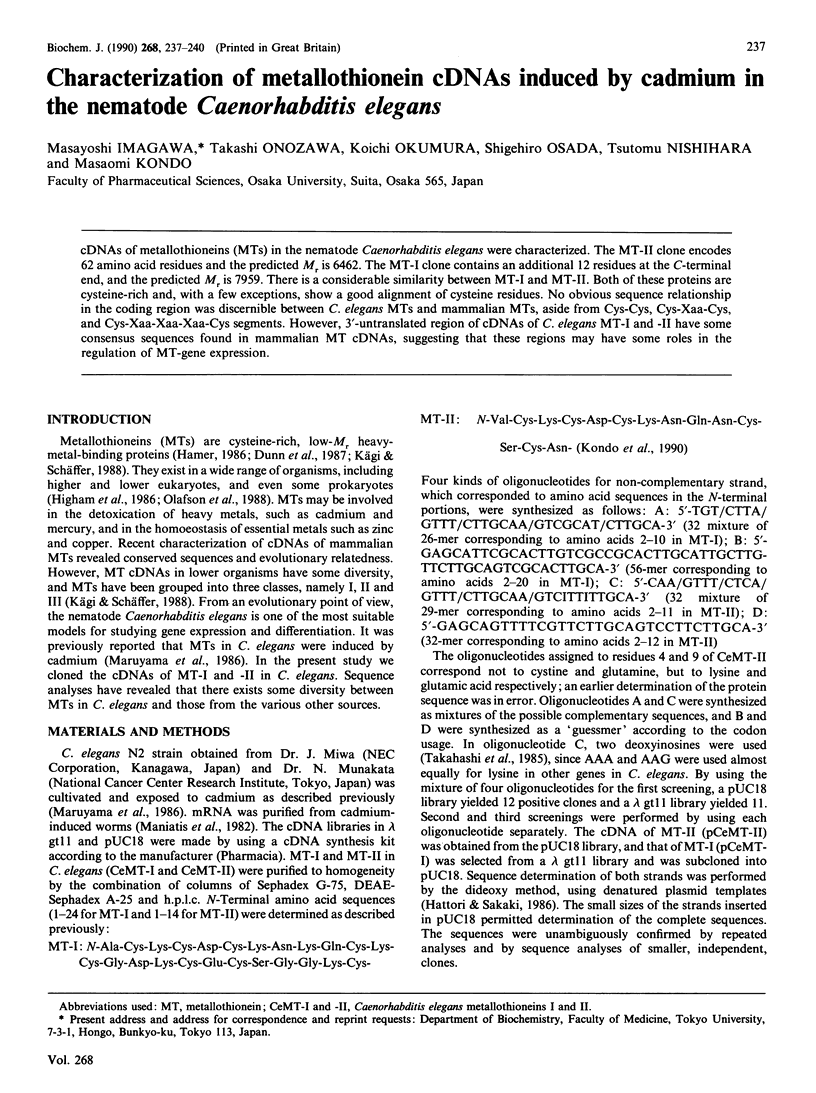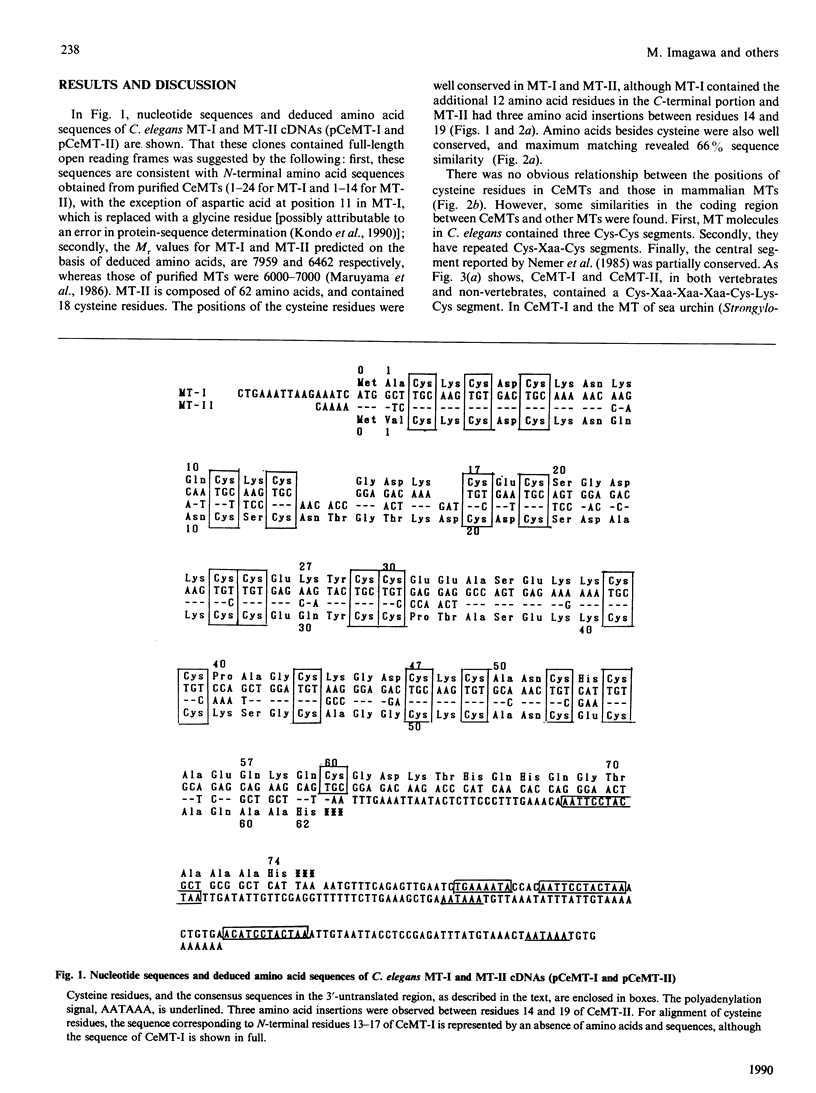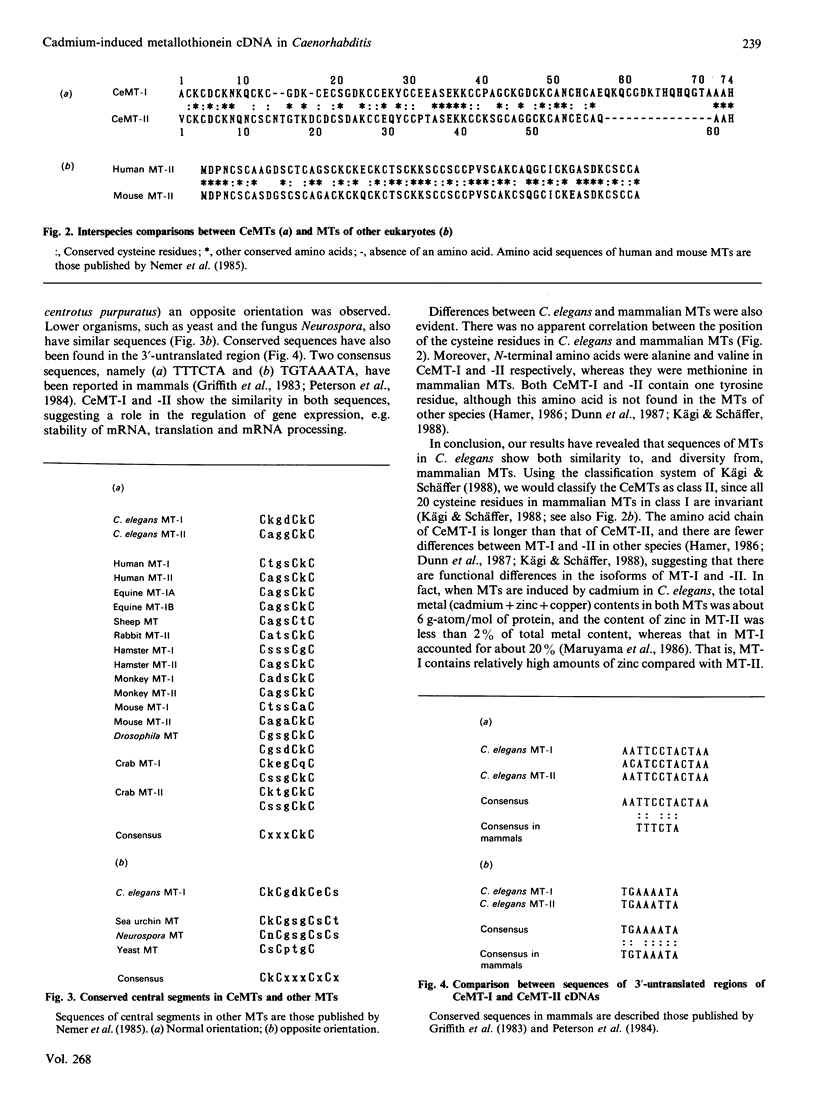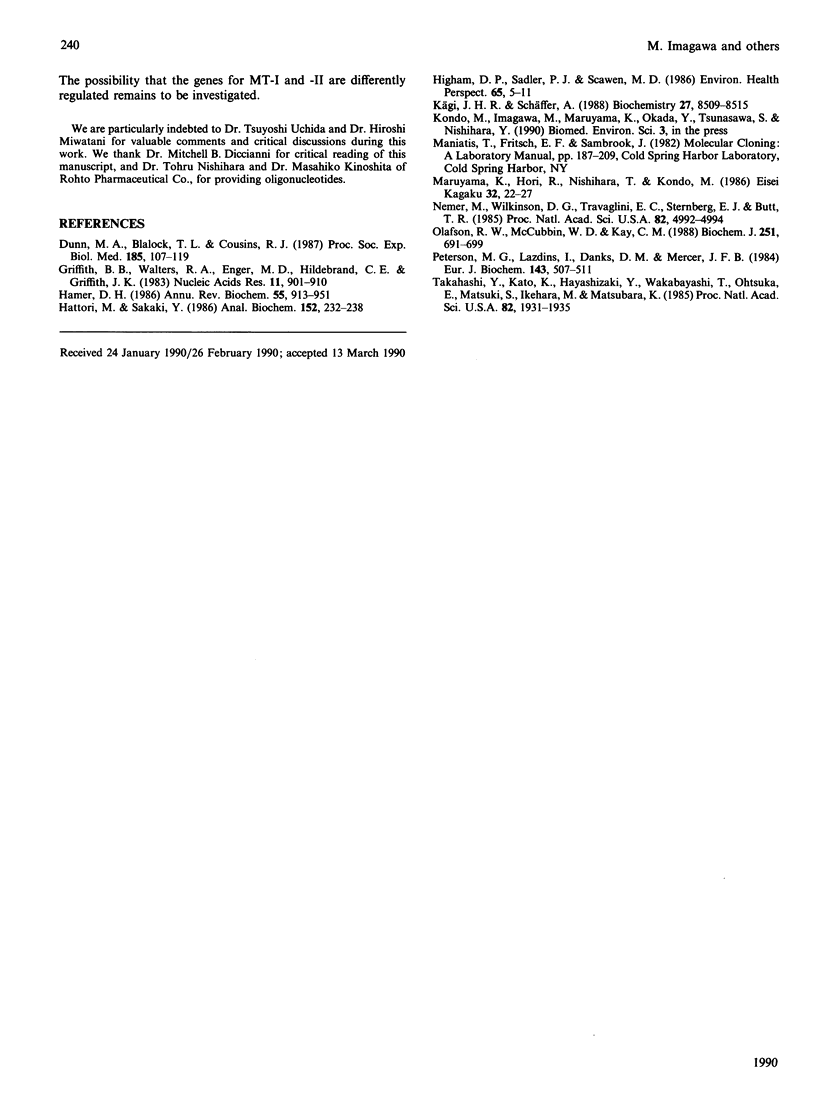Abstract
cDNAs of metallothioneins (MTs) in the nematode Caenorhabditis elegans were characterized. The MT-II clone encodes 62 amino acid residues and the predicted Mr is 6462. The MT-I clone contains an additional 12 residues at the C-terminal end, and the predicted Mr is 7959. There is a considerable similarity between MT-I and MT-II. Both of these proteins are cysteine-rich and, with a few exceptions, show a good alignment of cysteine residues. No obvious sequence relationship in the coding region was discernible between C. elegans MTs and mammalian MTs, aside from Cys-Cys, Cys-Xaa-Cys, and Cys-Xaa-Xaa-Xaa-Cys segments. However, 3'-untranslated region of cDNAs of C. elegans MT-I and -II have some consensus sequences found in mammalian MT cDNAs, suggesting that these regions may have some roles in the regulation of MT-gene expression.
Full text
PDF



Selected References
These references are in PubMed. This may not be the complete list of references from this article.
- Dunn M. A., Blalock T. L., Cousins R. J. Metallothionein. Proc Soc Exp Biol Med. 1987 Jun;185(2):107–119. doi: 10.3181/00379727-185-42525a. [DOI] [PubMed] [Google Scholar]
- Griffith B. B., Walters R. A., Enger M. D., Hildebrand C. E., Griffith J. K. cDNA cloning and nucleotide sequence comparison of Chinese hamster metallothionein I and II mRNAs. Nucleic Acids Res. 1983 Feb 11;11(3):901–910. doi: 10.1093/nar/11.3.901. [DOI] [PMC free article] [PubMed] [Google Scholar]
- Hamer D. H. Metallothionein. Annu Rev Biochem. 1986;55:913–951. doi: 10.1146/annurev.bi.55.070186.004405. [DOI] [PubMed] [Google Scholar]
- Hattori M., Sakaki Y. Dideoxy sequencing method using denatured plasmid templates. Anal Biochem. 1986 Feb 1;152(2):232–238. doi: 10.1016/0003-2697(86)90403-3. [DOI] [PubMed] [Google Scholar]
- Higham D. P., Sadler P. J., Scawen M. D. Cadmium-binding proteins in Pseudomonas putida: pseudothioneins. Environ Health Perspect. 1986 Mar;65:5–11. doi: 10.1289/ehp.86655. [DOI] [PMC free article] [PubMed] [Google Scholar]
- Kägi J. H., Schäffer A. Biochemistry of metallothionein. Biochemistry. 1988 Nov 15;27(23):8509–8515. doi: 10.1021/bi00423a001. [DOI] [PubMed] [Google Scholar]
- Nemer M., Wilkinson D. G., Travaglini E. C., Sternberg E. J., Butt T. R. Sea urchin metallothionein sequence: key to an evolutionary diversity. Proc Natl Acad Sci U S A. 1985 Aug;82(15):4992–4994. doi: 10.1073/pnas.82.15.4992. [DOI] [PMC free article] [PubMed] [Google Scholar]
- Olafson R. W., McCubbin W. D., Kay C. M. Primary- and secondary-structural analysis of a unique prokaryotic metallothionein from a Synechococcus sp. cyanobacterium. Biochem J. 1988 May 1;251(3):691–699. doi: 10.1042/bj2510691. [DOI] [PMC free article] [PubMed] [Google Scholar]
- Peterson M. G., Lazdins I., Danks D. M., Mercer J. F. Cloning and sequencing of a sheep metallothionein cDNA. Eur J Biochem. 1984 Sep 17;143(3):507–511. doi: 10.1111/j.1432-1033.1984.tb08399.x. [DOI] [PubMed] [Google Scholar]
- Takahashi Y., Kato K., Hayashizaki Y., Wakabayashi T., Ohtsuka E., Matsuki S., Ikehara M., Matsubara K. Molecular cloning of the human cholecystokinin gene by use of a synthetic probe containing deoxyinosine. Proc Natl Acad Sci U S A. 1985 Apr;82(7):1931–1935. doi: 10.1073/pnas.82.7.1931. [DOI] [PMC free article] [PubMed] [Google Scholar]


